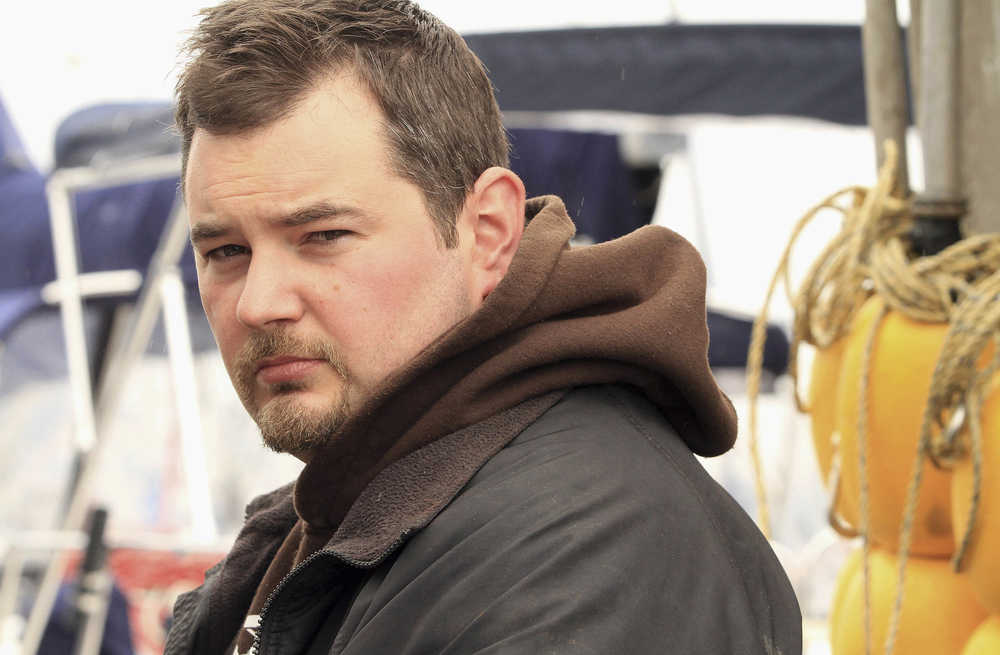SEWARD — Austin Sollars got his first paid commercial fishing job at 11, baiting hooks on a 74-foot halibut schooner that fished off the Aleutian Islands. Along with his father, he was part of a crew of nine, and he returned home with more than $30,000.
When he turned 21, he took out a quarter-million dollar loan and bought a 54-foot fishing boat, the Jani-K. He catches salmon, halibut and gray cod in southeast Alaska, then heads to the Gulf of Alaska for black cod.
Sollars, 30, is bucking a trend. Fewer young Alaskans are jumping into commercial fishing. A steep financial commitment, competition for fish, long periods away from home and uncertain fish prices play a part in the reluctance to fish.
Sollars last year took a temporary job as a deckhand, and for a few days, could concentrate on the catching without the pressures of the business side.
“It was nice not having to worry about the pointy end of the boat,” he says.
In 1985, the average age of an Alaska permit holder was 40. Now it’s 50. Alaska provides more than 55 percent of U.S. seafood production, and while most Americans don’t care who catches their fish, the “graying of the fleet” is a concern to the state.
Commercial fishing is the economic backbone of rural coastal villages. When young people don’t fish, and precious fishing permits leave, it’s a blow to both village economics and identity, said Rachel Donkersloot, a cultural anthropologist.
“There are all these cascading effects in our communities when we lose that access to the resource,” said Donkersloot, who works for the Alaska Marine Conservation Council. “It’s about social roles. It’s about cultural reproduction. It’s about access to local foods.”
She is co-author of a study published in Environment magazine that concluded the top obstacle to young Alaskans entering commercial fishing is the high cost. The expense begins with buying the right to fish.
Looking for ways to prevent overharvest of salmon, Alaska in the early 1970s created a limited entry system that capped the number of people who could fish. Those coveted permits are now expensive.
“In many cases, it will be more than your boat,” said Sunny Rice, a marine advisory program agent for the University of Alaska’s Sea Grant program.
Paging through a fishermen’s journal, she spotted a Bristol Bay drift net permit advertised for $135,000 and a southeast Alaska seine permit for $200,000. The right to catch halibut, overseen by federal regulators, is out of the price range for an independent fisherman.
Donkersloot and her co-author, Courtney Carothers of the University of Alaska Fairbanks, found that a lack of fishing experience to be an obstacle even in historic fishing communities. On Kodiak Island, less than 10 percent of high school students had involvement in the industry though 33 percent have family ties it.
Sollars grew up on a homestead near Petersburg, a fishing community 120 miles southeast of Juneau, and has decades of experience from fishing with his father and other skippers. That didn’t help with low prices and other factors that led to his worst year of fishing in 2015.
He bought his own boat when he saw regulatory changes that led to the consolidation of permits and fewer good deckhand jobs. Taxes for fishing programs keep rising, he said, and federal marine mammal protections allow fishermen’s natural competitors to thrive.
Sea otters, he said, are wiping out clam and crab populations. Sea lions steal king salmon from his troll lines. Sperm whales attacking his longlines, a string of baited hooks up to 3 miles long on the ocean floor catching cod, have cost him thousands.
“I had three sets in the water,” he said of one occasion. “My first set had 680 fish on it. My second set had 740 fish on it. My third set, I had eight whales on me. I had seven fish. They’re literally sitting there stealing about $10,000 worth of fish off one set.”
The Bristol Bay Economic Development Corp. uses grants and help in creating business plans to entice regional residents back to commercial fishing in the world’s largest sockeye salmon fishery.
“There’s probably been an awful lot of young people who grew up listening to mom and dad at the dining room table lamenting the state of the industry, how you can’t make a living at it anymore,” said corporation President Norm Van Vactor.
He compares it to the breakup of family farms. If a fisherman’s children are not serious about fishing, in many cases, it’s simpler to sell the permit. “Flight of youth from rural areas is not just an Alaska issue, it’s an international issue,” he said.
Fishing permits are like other communities’ small businesses, he said. Bringing them back in the hands of young fishermen is crucial.
“Our communities are really being affected,” Van Vactor said. “We’re seeing the impact on school closures in communities and villages. It’s only going to get worse if we don’t do something quick and in a big way.”

